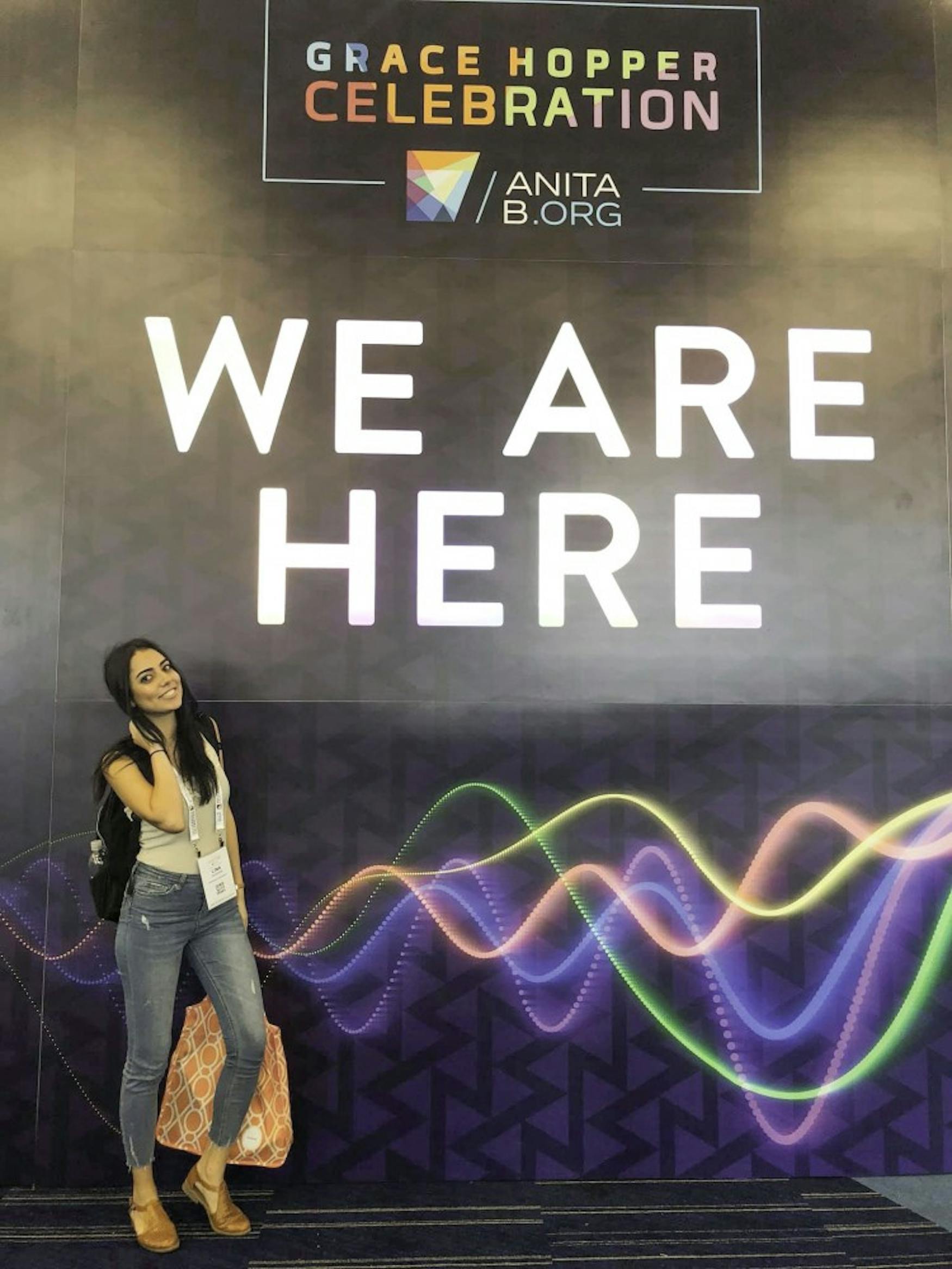Coding Community
Lina Ghanim '20 discussed women in computer science, and shared her efforts to encourage women to code.
Women majoring in computer science are a rare sight on university campuses across the U.S. While computer science research jobs are growing exponentially, the Bureau of Labor Statistics estimates that women only earn 18 percent of all bachelor’s degrees in computer science awarded by American universities. In the workplace, this has translated to a decline in female computer science professionals since the 1990s, and there is little to indicate a shift in this trend. The Justice spoke to one Brandeis student who is on a mission to change that.
Lina Ghanim is a Brandeis senior from Jerusalem working on her master’s degree in International Finance and Economics at the Brandeis International Business School. When she’s not in business and computer science classes, she’s probably writing computer code in Java. “What can I say — I just love coding,” Ghanim admitted, laughing.
Coming to Brandeis marked a major turning point in Ghanim’s life. Growing up, she never considered the idea that she could turn her love of coding into a business. She said, “Brandeis and the people here have helped me want to become a businesswoman, something that seemed unachievable back in Jerusalem.” Over the past three years, Ghanim has embarked on a mission to, as she puts it, “get girls into coding and computer science.” Dismayed by the relatively low number of women computer science majors at Brandeis, Ghanim tries to encourage everyone she meets with who are interested in computers to enroll in an entry-level class. But she acknowledges that there are real hurdles for women to overcome in the field.
The world of computer science and coding wasn’t always dominated by men. Back in the 1960s, before Stanford University and the Massachusetts Institute of Technology offered computer science majors, women were at the forefront of developing the first personal computers and computer languages to go along with them. Among these pioneers was Mary Allen Wilkes, a researcher at MIT who dreamed of being a litigator but pivoted to computer science because the field was more equitable toward women. Wilkes ended up working on the first personal computer called LINC after MIT’s Lincoln Laboratory. In the ’60s, writing code wasn’t considered a high-minded task, but rather a secondary job. As such, many of the first technological giants, like IBM, often filled their computer programming departments with women employees. In 1984, the number of women receiving bachelor’s degrees in computer science peaked at 37 percent.
Ghanim thinks a major reason for the gender disparity in computer science has to do with the pervasive view that women cannot handle the rigor of computer science classes. She said, “I’ve met a lot of girls on campus who would like to code, but are scared to enroll in any CS classes for fear they might fail. Many of these people I’ve spoken to have been told that coding is difficult and that the hours are too long for women, but that’s completely untrue.” Ghanim said that she encourages women to take a chance on coding and to “not be afraid of failure.”
When talking about coding with new students on campus, Ghanim often refers to her own story of how she found coding. When she first started coding, she recalls feeling stranded and alone. “I didn’t realize how many resources there are for women coders,” she explained.
Searching for a way to meet other women coders, Ghanim began attending software engineering conferences across the country. At the Grace Hopper Celebration of Women in Computing, an annual conference named after the inventor of one of the first programming languages used by the U.S. Navy, Ghanim met and interviewed with a recruiter. That meeting soon led to an internship at PayPal this past summer, where Ghanim worked in the company’s San Jose office on machine learning. When she talks about that experience, her eyes light up. For Ghanim, coding is an almost sacred act, and perfecting her code is akin to a painter refining their brushstrokes or a composer putting the final touches on an orchestration. “There is something special about writing code, she said. “It’s a language, but also an art. Coding allows you to create something all on your own and you don’t even have to be that good at it.”
In keeping with her mission to bring more women students in computer science, Ghanim recently founded the Women in Computer Science club where she hopes to create a community on campus for women who are interested in coding to find the support needed to get started. In addition, Ghanim is the president for the Brandeis chapter of Girls Who Code, a national organization whose mission statement is to “close the gender gap in technology and to change the image of what a programmer looks like and does.” While Ghanim is still trying to get WICS off the ground, she is optimistic about the future. “We’re making progress every day. Coding helped me find my voice, and I can help you too.”



Please note All comments are eligible for publication in The Justice.